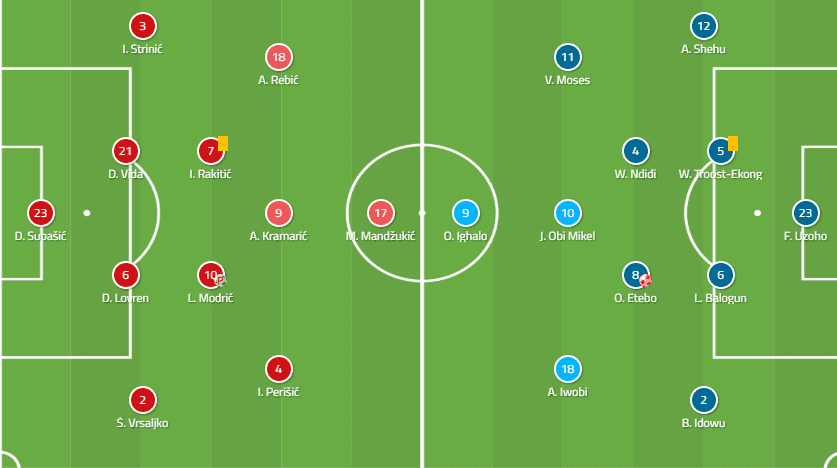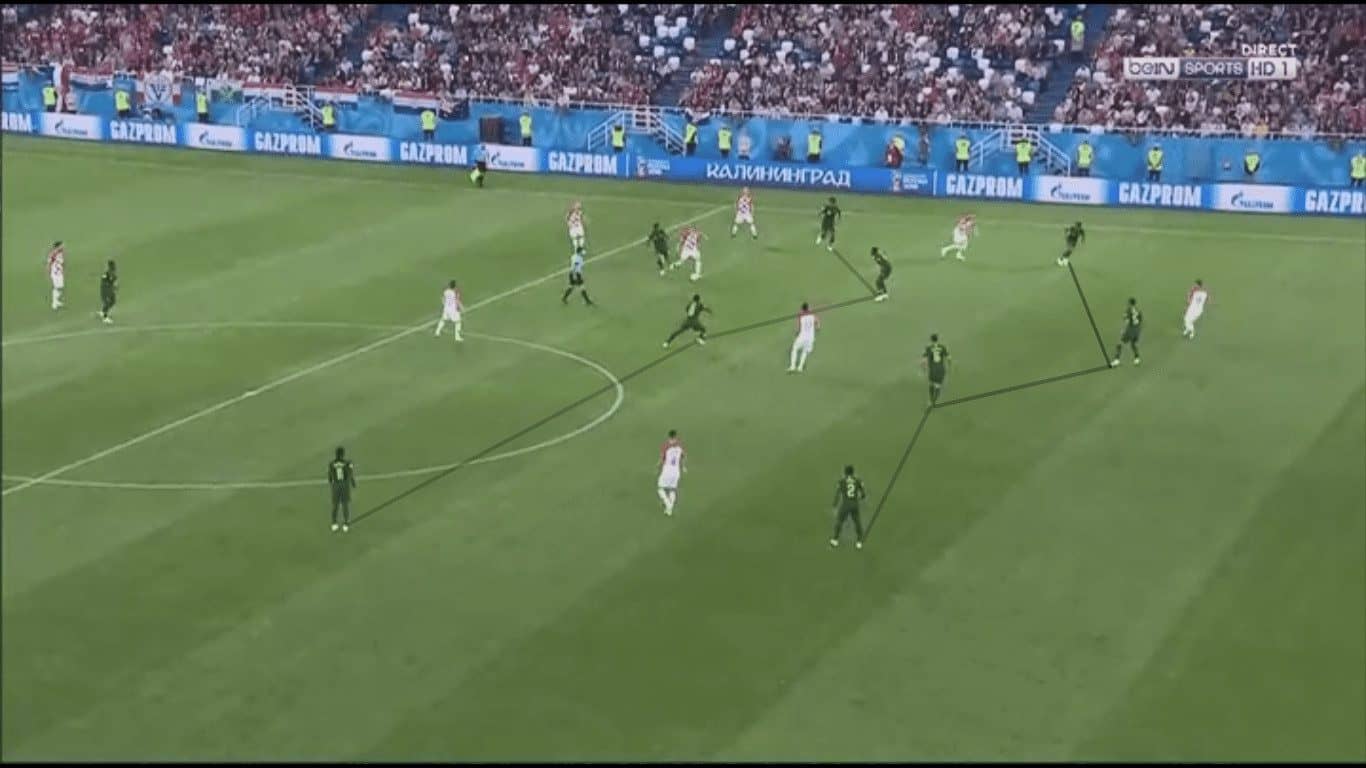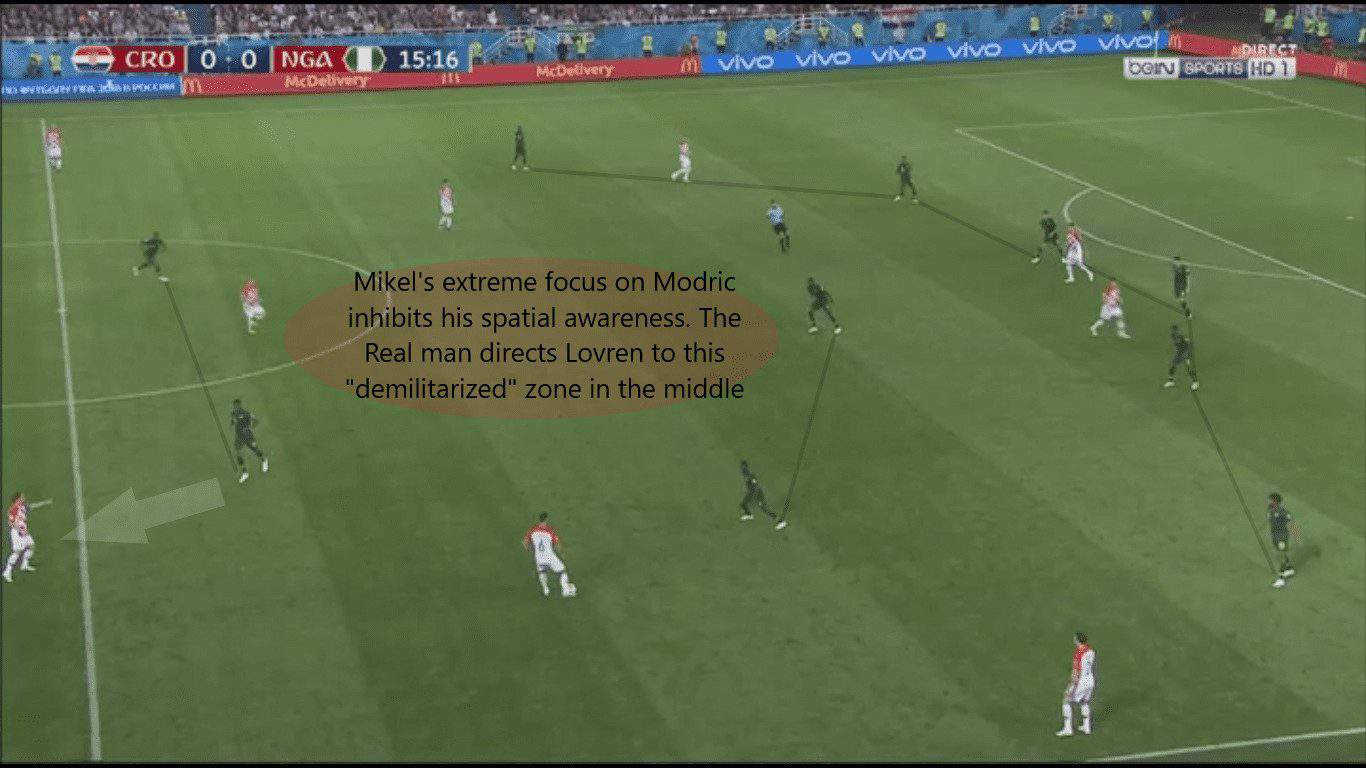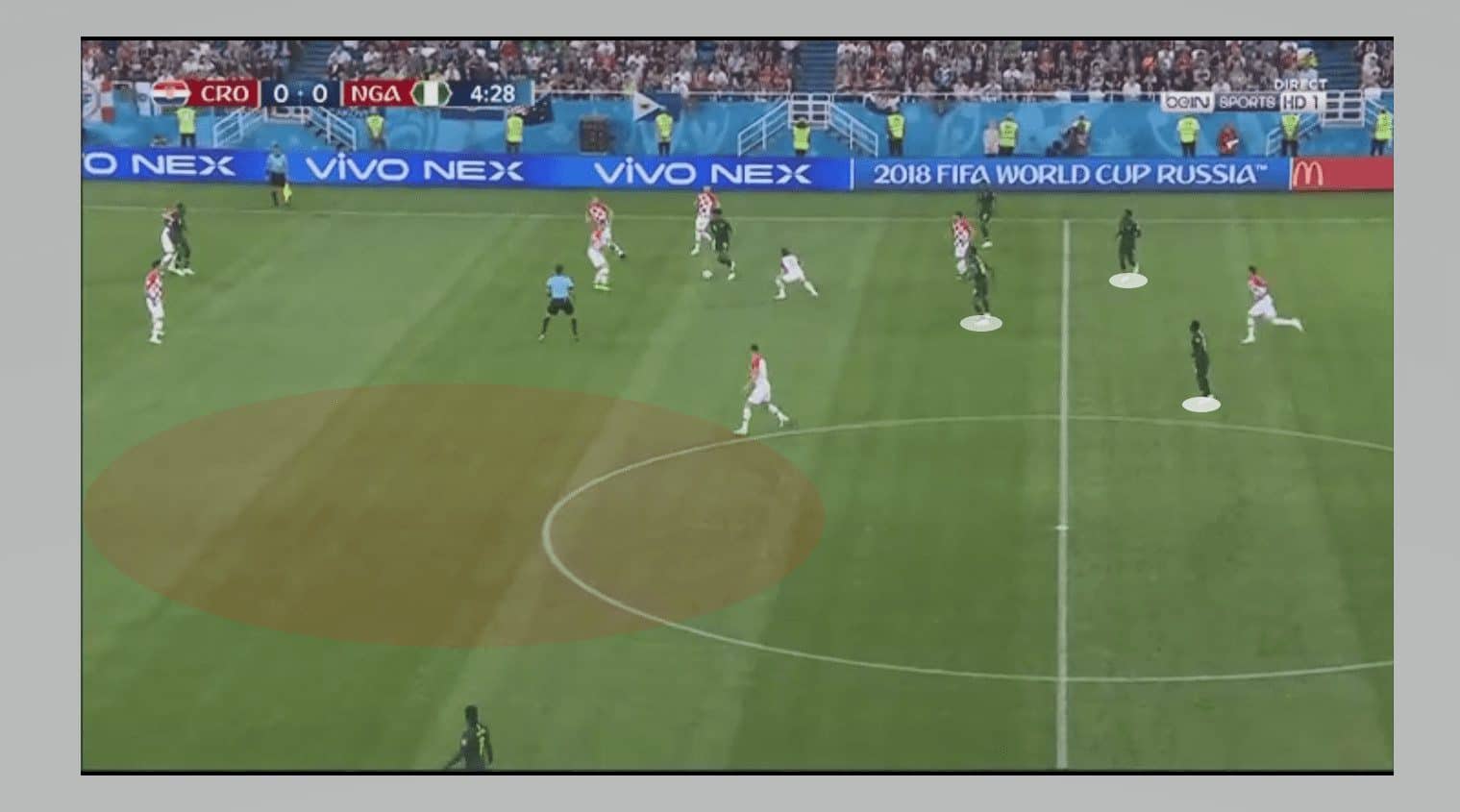Nigeria’s preparation was fraught with several issues coming into this summer’s World Cup. Having been so settled and business-like in qualifying, the team rather suddenly descended into disorder: uncertainty over the starting system, an unfortunate injury to key winger Moses Simon, the continued poor form of some starters, and poor performances in friendlies meant there was significant upheaval ahead of the kick-off against Croatia.
Croatia also came into the tournament with a couple of question marks, most revolving around how manager Zlatko Dalic would take to his task, having taken over right at the end of qualifying. The sheer weight of resources, especially in midfield, meant expectations were always going to be high. How, though, would they adapt to Nigeria’s counter-attacking game and pace?
TEAM NEWS

Croatia made a crucial change from Dalic’s previous games. Having previously played Luka Modric in an advanced position behind the striker, he moved the Real Madrid man deeper alongside Ivan Rakitic, and in came Andrej Kramaric. This signified a more direct approach. Mario Mandzukic led the line, and Domagoj Vida replaced Vedran Corluka at the back.
Nigeria reverted to the 4-2-3-1 that had been ubiquitous during qualifying, sensibly opting against a back three with wing-backs. Oghenekaro Etebo came into the side in place of Ogenyi Onazi, partnering Wilfred Ndidi at the base of midfield. Shehu Abdullahi started at right-back ahead of the more dynamic Tyronne Ebuehi.
MATCH-UP OF SYSTEMS
With both teams playing a 4-2-3-1, the apparent question was how to create access to the second ‘6’. Nigeria tried to go man-for-man, with Mikel oriented on Rakitic and Etebo stepping up to get close to Modric.
This left Ndidi with a lot of lateral ground to cover, and Kramaric was the game’s key player, operating on Etebo’s blindside to make third man runs and receive lay-offs from Mandzukic.

Here, Mikel is unable to get back on top of Rakitic in time after a turnover. The move is flagged for offside, but displays the intelligence of Kramaric’s movement to repeatedly find space between the lines.
This man orientation also led to problems with compactness, especially when one of the centre-backs (usually Lovren), brought the ball out of the defence. Nigeria, wary of Croatia’s penchant for attacking through the flanks, sometimes dropped the wingers so deep that the team looked like an occasional 6-2-2, with Moses and Iwobi ending up in wing-back positions. This put a huge amount of strain on the Nigeria midfield, as can be seen here.

This 6-2-2 structure had the knock-on effect of making it impossible for Nigeria to properly transition into attack, a fine example of defending through being attacking: by getting both Strinic and Vrsaljko into advanced positions, Dalic took away a key attacking weapon for the Super Eagles.
Kramaric’s performance was a total contrast to how Nigeria’s nominal number 10, Mikel, interpreted the role. The former Chelsea man fulfilled an illustrious career with the London side playing just in front of the defence, but surprisingly acts as the attacking fulcrum for the national side. However, while Croatia have two of the finest playmakers at the base of midfield, the profile of the Nigerian midfield is unable to consistently supply the ball between the lines.
This has been a longstanding issue within the team, often requiring Mikel to drop very deep to get the ball. When he did this, however, there was no presence inside Croatia’s block, and no support for the isolated Odion Ighalo. Here, Iwobi is crowded out as there is no one to connect with: the midfield is too deep, and Ighalo is well marshalled.

Croatia, on their part, also defended in a 4-4-2, but neglected to engage the Nigerian centre-backs. Instead, the front two dropped onto the defensive midfielders, forcing the centre-backs to play direct by pushing Ndidi higher up to challenge in the air and win second balls. There were few intelligent solutions; Etebo moving alongside the centre-backs might have helped to better access the half-spaces, for instance.
SQUARE PEGS, ROUND HOLES
It is impossible to talk about this game without calling into question the decision-making of Nigeria manager Gernot Rohr. Nigeria lacked intensity, and this seemed a consequence of a number of players playing in positions there were not best suited.
We have already mentioned Mikel; Iwobi out wide struggled to get into the game, and his creativity was wasted, while Etebo and Ndidi, an energetic box-to-box attacker and an aggressive ball-winner respectively, were tasked with sitting deep and starting attacks.
It made for a rather frustrating watch, all things considered.
CONCLUSION
Nigeria’s myriad structural issues are worth highlighting, but this was a game decided effectively by two corner kicks. It is a weakness which was always apparent, but which Rohr must urgently address if the Super Eagles are to avoid embarrassment at this World Cup – Iceland are strong on set-pieces as well.
The tactical battle did not decide the game in a direct way, but it helped Croatia gain the upper hand. There is still a sense with them that they are not quite the sum of their parts, and they were not great here, but then they did not have to be. This win has put them in a very good position going into their next game against Argentina.





Comments